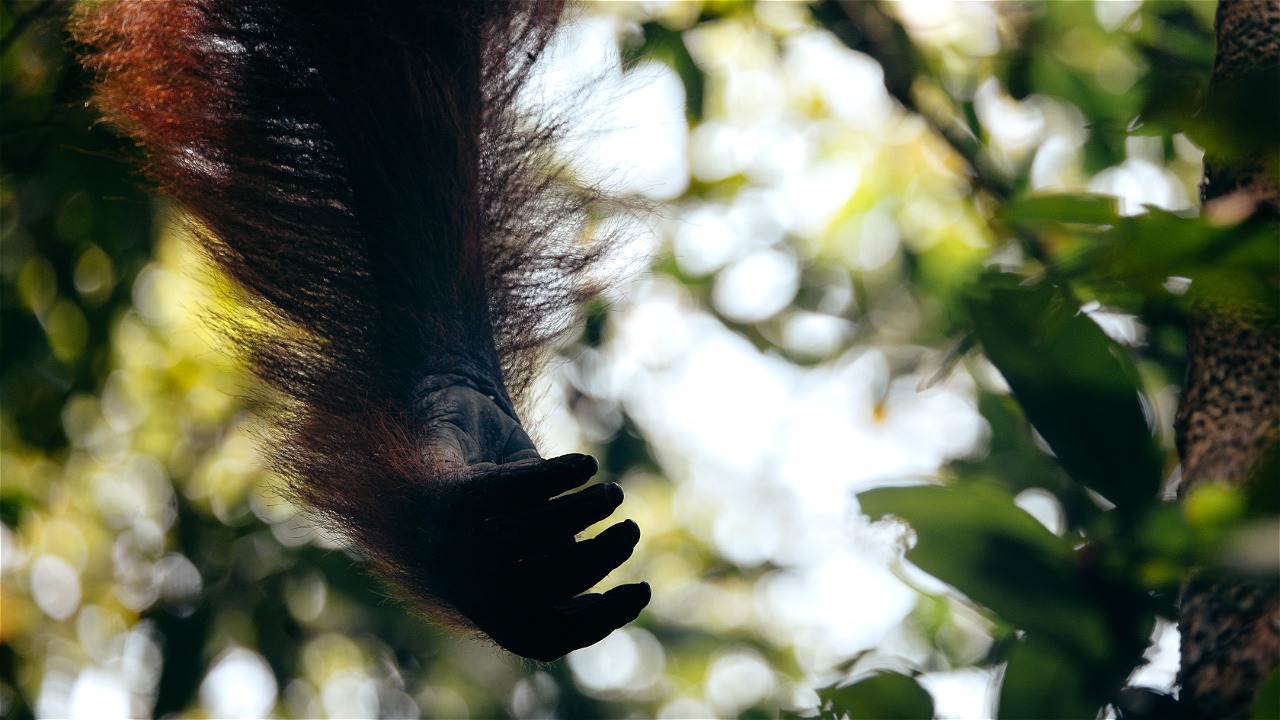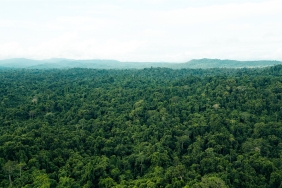MITIGATING ROAD THREATS TO WILDLIFE, WWF AND UNILA HOLD PUBLIC LECTURE
By: Hijrah Nasir
There was something interesting about the public lecture at the University of Lampung on Wednesday, March 15, 2017. The public lecture titled Highway Ecology: Building Roads in Conservation Areas was held in commemoration of the Dies Natalies of UNILA's Faculty of Engineering. Interestingly, WWF also took part in the implementation of this activity. The public lecture was attended by at least 200 people consisting of lecturers and engineering students. Acting as keynote speakers, UNILA Civil Engineering lecturer, Ir. Anshori Djausal, M.T., and WWF Indonesia TNBBS Project Leader, Job Charles.
In his presentation, Mr. Anshori mentioned that roads or infrastructure often have to be built across conservation areas for economic, social, political and even national security purposes. However, the existence of this road has an impact on the environment. Unfortunately, the construction of these roads rarely accommodates the interests of the affected environment and wildlife.
Therefore, in engineering science, a study of highway ecology has emerged and developed as an effort to ensure that road construction continues to pay attention to the preservation of natural resources. Highway ecology is a study of the relationship between roads and the environment that studies the effect of roads on animal populations and on ecological processes, including both positive and negative environmental impacts due to road construction, such as noise pollution, water pollution, environmental damage, air quality, habitat fragmentation, ecosystem degradation, and climate change from vehicle emissions.
He explained that roads are a significant cause of damage to forests, rivers and swamps. In addition, there is habitat loss due to the road itself, animal roadkill, sound, water, and air, disturbance to vegetation species which affects the decline of local native animal habitat and becomes an obstacle to animal movement, and increases the threat of poaching and encroachment of forest areas because with roads, illegal loggers are easier to transport wood and poachers have easier access to enter the area.
He pointed out that 95% of forest encroachment and burning occurs up to 50 km from the road in the Amazon forest, Brazil. In addition, the presence of roads also hinders movement and changes animal communities as research conducted in the TNBBS area by Dessy found that bird movement changed up to 40 meters on the edge of the Sanggi - Bengkunat road.
As for other research from the presentation of WWF Indonesia's project leader, TNBBS Project, Job Charles said that around 18,200 ha (5 km right and left of the road) there are no longer active rhino burrows, and reduced animal trails (from 9 trails to 3 trails). He also added that there are nine roads in TNBBS but only five roads have been licensed by the Forestry Service. There are three national roads and six provincial roads, but there are 375 points of rat roads that usually become community crossings in the TNBBS area. Based on this, in 2009 - 2010, WWF Indonesia conducted a study of road infrastructure in conservation areas, where WWF encouraged the government not to open new roads.
In 2012, WWF installed 45 camera-trap units along the Sanggi - Bengkunat road where the results showed 42 species including tigers, rhinos, and Sumatran elephants. In addition, WWF also measured the frequency of passing vehicles. The results of research conducted in 2015 in the Sanggi - Bengkunat area, Bukit Barisan Selatan National Park showed that the total number of vehicles crossing the road in the area reached 1,439 vehicles per day with the highest percentage being motorbikes and heavy goods transport cars which reached 366 cars per day.
The construction of roads that cut through the forest has posed various threats to the existence of wildlife. However, Mr. Anshori added that through design, construction, and management of roads and associated facilities including vehicle and traffic management, these impacts can be reversed. Therefore, technical roads must meet environmental requirements, including being equipped with an AMDAL document and preceded by a feasibility study; road construction is made in accordance with local conditions with a minimum of cut and fill; road construction does not cut waterways so as not to affect the water system of the surrounding area; road construction accommodates the interests of animal crossings so as to help the movement of animals; road construction does not cut the core area of conservation areas; road construction uses environmentally friendly materials; and there are no puddles caused by road construction or road intersections.
Therefore, efforts that need to be made include integrated conservation planning, mitigation efforts to reduce the impact of roads on wildlife, re-establishing habitat corridors and changing the way road users view wildlife. Therefore, wildlife crossings that allow animals to safely cross man-made barriers such as roads, are intended not only to reduce roadkill, but ideally to provide connectivity of habitat areas, including combating habitat fragmentation, e.g. the creation of wildlife crossings, such as underpass tunnels, viaducts and flyovers.
In TNBBS, mitigation efforts for the 11.5 km road that crosses TNBBS can be done by building canopy crossings, animal crossing paths both overpasses and underpasses, the availability of signs, and improving road contours to return to natural contours. Such mitigation efforts are expected to ensure the maintenance of natural ecosystem functions in the area. Job Charles in his presentation also added that it is necessary to develop a transectoral approach between relevant ministries and close illegal access roads for cars and motorcycles, as well as the need for regulations and infrastructure (animal crossing paths) on existing roads to reduce the negative impact of roads and reduce threats to wildlife.



